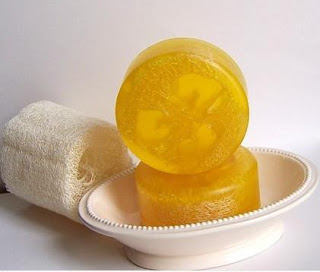Homemade Facial Masks

Make your own facial mask at home! Face masks for every type of skin
Masks Application are one of the oldest beautifying treatment. All it needs for a beautiful, glowing, fresh skin is put it on preparation, leave it ten to twenty minutes, the wash off. There are many different types of face masks - having a nourishing, healing, cleansing and an astringent lotion. Making masks from natural ingredients is easy to do and can be very effective.
And the good news is that you can make these wonder facial masks at home easily. One of the most important things to remember while using a mask is to relax. Here are a few simple home made face masks.
Homemade facial masks for All Skin Type
Mask 1. Milk Mask
This is one if the simplest and cheapest mask. Damp some cotton wool with milk and rub it on the face.
Mask 2. Egg Mask
Separate the egg white from the yolk. Put the egg white on your face and relax for about 15 minutes. Wash off with lukewarm water. This facial mask leaves your skin smooth, refreshed and tightens your skin.
Mask 3. Cleansing Face Mask
Mix the following ingredients into a paste, apply and leave it for 15 minutes.
1 tablespoon powdered brewer's yeast
1/2 tablespoon yogurt
1 teaspoon lemon juice
1 teaspoon orange juice
1 teaspoon carrot juice
1 teaspoon olive oil
This mask is suitable for all types of skin, particularly if they feel tired and look sluggish or spotty. If the skin is very dry add more oil, and if very oily leave it out. The yogurt cleanses the skin thoroughly and fruits juices provide vitamins and minerals.
Face Packs for Dry Skin
Mask 1. For Mint face pack you will need one teaspoon of mint powder, One tablespoon of yogurt and One tablespoon of multani mitti.
Soak both multani mitti and mint powder in the yogurt for 20 minutes. Then mix them well by beating and apply on your face for 15 minutes. Leave it to dry for some time and then wash off with lukewarm water.
Mask 2. For Egg face pack you will need Egg yolk of one egg, One teaspoon of milk powder and Half teaspoon of honey. After beating egg yolk properly, mix milk powder and honey to it. Continuously beat again to obtain a medium thickness mixture. Apply it on the face and wash off with lukewarm water.
Avacado Face Mask: Avocados make excellent face masks for dry skin. They boast 14 minerals as antioxidant vitamins E and A. To prepare a face mask, mash up avocado, add a touch of sweet almond oil and smooth the mixture over your face, keep it on for as long as possible to nourish and soften the skin.
Face Packs for Oily Skin
Mask 1. Tomato Mask : For oily skin, mash up a ripe tomato and leave it on for 15 to 20 minutes. Rinse with lukewarm water.
Mask 2. For Potato face pack you will need One teaspoon of potato juice and One teaspoon of multani mitti. Blend both the ingredients together and apply on the face. Leave it until it dries and wash off with lukewarm water.
Marie Antoinette's homemade facial mask: This mask is effective for all skin types, but the witch hazel and lemon can be harsh on dry skin. For preparing this face pack you will need the following ingredients - 1 egg, Juice of one lemon, 4 tbsp cup non-fat dry milk powder and 1 tbsp witch hazel. Put all the ingredients in a blender or food processor and mix well. Alternatively, you can blend them together by using a fork or a wire whisk. Apply the mixture to your face, neck and chest and allow it to dry for around 15 minutes. Use the remaining cream as a cleanser to remove the mask. Then, rinse your face thoroughly with warm water and pat dry.
Honey Cleansing Scrub: Mix 1 tablespoon honey with 2 tablespoons finely ground almonds and ½ teaspoon lemon juice. Rub gently onto face. Rinse off with warm water.
Gentle Oatmeal Face Mask: A good face mask for oily skin, this recipe is sufficient for one treatment and must be applied as soon as it is mixed. Mix 15 ml/1 tbsp runny honey and 1 egg yolk together in a small bowl, then slowly stir in enough (60 ml) oatmeal to make a soft paste. Smooth the mask in to the skin of the face and neck and leave for 15 minutes. Rinse off with lukewarm water and pat your skin dry.
Face Masks Application Tips

Your skin can change with the seasons. Skin that becomes oily in the hot summer months can become drier in winter and in central heating. So take your skin's quirks into account when choosing your mask.
1. Cleanse your face before applying the chosen face mask. Afterwards, rinse with warm water and than apply moisturizer.
2. Most face masks should be left on the skin for between 3 and 10 minutes. For the best results, read the instructions carefully.
3. If you have combination skin, use two masks - one suitable for
oily skin and one for dry skin. Just apply each one to the area that needs it.














